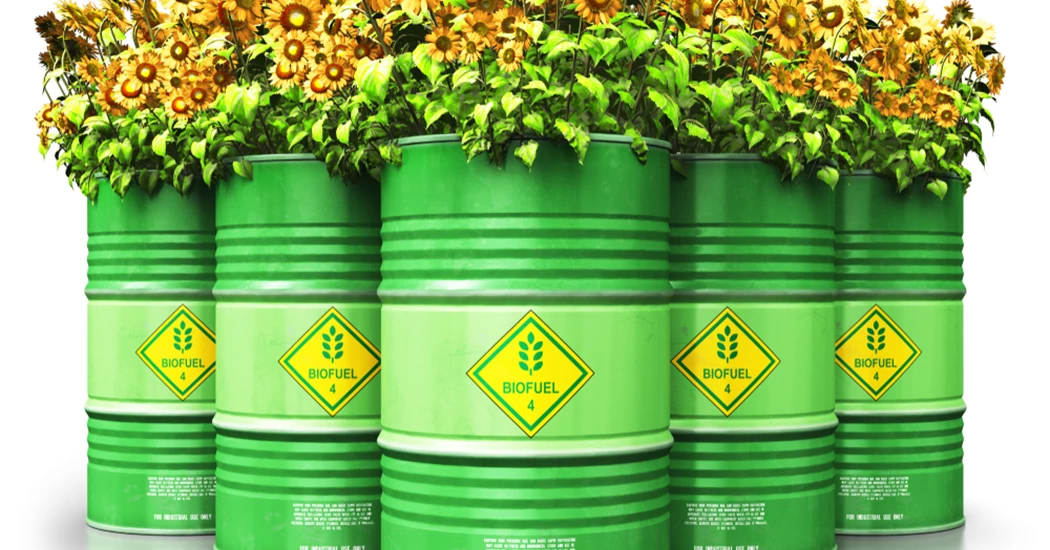The new wave of biomaterials: When innovation meets demand
Biomaterials have long been a part of our daily lives, from wooden houses to woollen clothes. More recently, biotech advances have brought us sugar-derived first-generation biofuels and high-performance enzymes to power our laundry detergents.
Today, the Bio Revolution continues, with rapid advances each year in DNA sequencing, gene editing, AI, and other technologies that ultimately benefit the development of biomaterials. However, this wave of innovation is different. Sustainability is changing the basis of competition in chemicals and materials and is creating demand-side disruption.
Companies are making many types of sustainability commitments however, the most broadly consequential commitments relate to GHG-footprint reductions. McKinsey examined five end markets for chemicals and materials and found that a vast majority of leading companies (74 percent) have already made commitments concerning Scopes 1 and 2 emissions. Additionally, nearly 50 percent have committed to Scope 3 GHG emissions reductions including the emissions associated with the upstream production of ingredients and raw materials.
Bringing biomaterials to market
Biomaterials are among multiple levers that companies can pull to improve the sustainability of their supply chains and products. The question is how biomaterial producers can chart a clear role for their products amid other options, such as greener manufacturing and recycling. Understanding the nuances around creating value from sustainability is the first step, followed by determining the best possible use cases across the three types of biomaterials.
Although biomaterials are better poised than ever to offer sustainability benefits, including reduced carbon footprints, improved biodegradability or recyclability of materials, and superior performance in certain applications, there are several considerations critical to ensuring that biomaterials actually deliver a net-positive sustainability impact.
Biomaterial product types
Not all biomaterials are created equally. Beyond simply reducing cost and environmental impact, biomaterial companies must understand the technical differentiation of their products and the value chains into which they are looking to sell. The relative importance of these factors varies across three biomaterial product types.
Drop-ins: This bio-based production route is used to make a product traditionally derived from petrochemicals. “Drop-ins” refer to chemicals that can essentially be dropped into existing products without changing surrounding operations. For bio-based drop-in chemicals, life-cycle carbon-emissions reductions of 50 percent (or more) are possible relative to traditional petrochemical routes. This represents a significant value proposition for companies looking to reduce their Scope 3 footprints. Companies that succeed with drop-ins can develop efficient, cost-competitive (although not necessarily lower-cost) processes and identify the specific customer segments that are interested in greener materials.
Bio-replacements: For this product type, a bio-based chemical is used to make a new material that is effectively at parity for measures such as technical performance and cost but that offers a significant improvement in environmental impact. These are perhaps the most difficult products to succeed with because they can require complex changes across the value chain without delivering technical differentiation. Success requires sharply targeting applications that have low regulatory and testing barriers to incorporate new materials and build a strong consumer-facing element. This way, beneficial environmental impact is optimized.
Bio-better: Unique biochemical synthesis routes can enable completely new combinations of material properties, such as biotech-derived optical films. In this case, the technical advantages are the primary driver of product adoption, with the added bonus of enhancing the environmental profile.
What it will take to succeed
But how can biomaterials businesses ensure that their products play a positive role in a more sustainable future? Adhering to the following four principles will be critical.
Excel at the fundamentals of cost and performance and partner with traditional chemical players to gain an edge
For “bio-native” companies that have emerged around novel development and manufacturing processes, formulation of usable product forms and commercialisation present new challenges that often have little to do with biological understanding. Yet established chemical companies with traditional, petrochemical-based products often have strong application understanding, formulation capabilities, and relationships with key customers. There is natural synergy in marrying greener (and novel) chemistries with the application-development expertise and market access of existing players to catalyse superior performance, cost, and customer relationships.
Meet the nuanced needs and evolving sustainability concerns of customers
Although GHG-emissions goals are a directional indicator, there is nuance within and beyond these targets. For example, how corporations define Scope 3 boundaries—cradle-to-grave versus cradle-to-gate —can affect the relative sustainability benefits of biotech, or fermentation-derived materials, versus biomass-derived materials, for which most processing steps are identical to the petrochemical route. This means that non-GHG sustainability goals, such as renewable content levels or biodegradability, will affect the value proposition of any given biomaterial.
Biomaterial players must recognize that as corporate commitments rise over time so too will other routes to more sustainable materials. In short, the bar is rising and competition is intensifying. After all, other materials can also deliver GHG reductions. To maintain an edge, biomaterial players should leverage the latest tools of the Bio Revolution and continue to prioritise process innovation to fulfil a variety of ESG goals and sustainability criteria. Continued identification and incentivisation of more sustainably farmed carbon feedstocks is necessary to further improve the environmental footprint and cost-effectiveness of biomaterials.
De-risk investments through business models and demand commitments
A frequent challenge in biomaterial commercialisation is the financing of expensive capital projects, which, just as in petrochemicals, can cost several hundred million dollars. Given that the investment risk is even higher for first-of-their-kind plants, the result is that many promising biomaterial technologies only exist at pilot scale. Public purchase agreements between a consumer brand and a biomaterial company are becoming increasingly common before plants are even built, which can be a simple way to reduce uncertainty and investment risk. Thus, by identifying offtakes for a significant portion of planned volumes ahead of time, biomaterial players can make business cases more palatable for financers and partners alike.
Provide clarity and transparency to stakeholders on sustainability attributes
Corporations and consumers encounter a wide variety of labels and branding around the chemicals and materials that go into products. The term “biomaterial” itself can be confusing, sometimes referring to materials of biological origin and other times referring to biodegradable, fossil-derived products. Greater consistency and alignment across the chemicals and materials industry around labelling can help shift the conversation away from definitions and toward the merits and the metrics that allow biomaterials to compete on a clearer playing field.
If biomaterial and chemical players can execute on these principles, biomaterials will play a substantial role in delivering a more sustainable status quo for chemicals production, as well as introducing the next horizon of performance to bring us into the future.
KEEPING THE ENERGY INDUSTRY CONNECTED
Subscribe to our newsletter and get the best of Energy Connects directly to your inbox each week.
By subscribing, you agree to the processing of your personal data by dmg events as described in the Privacy Policy.



















